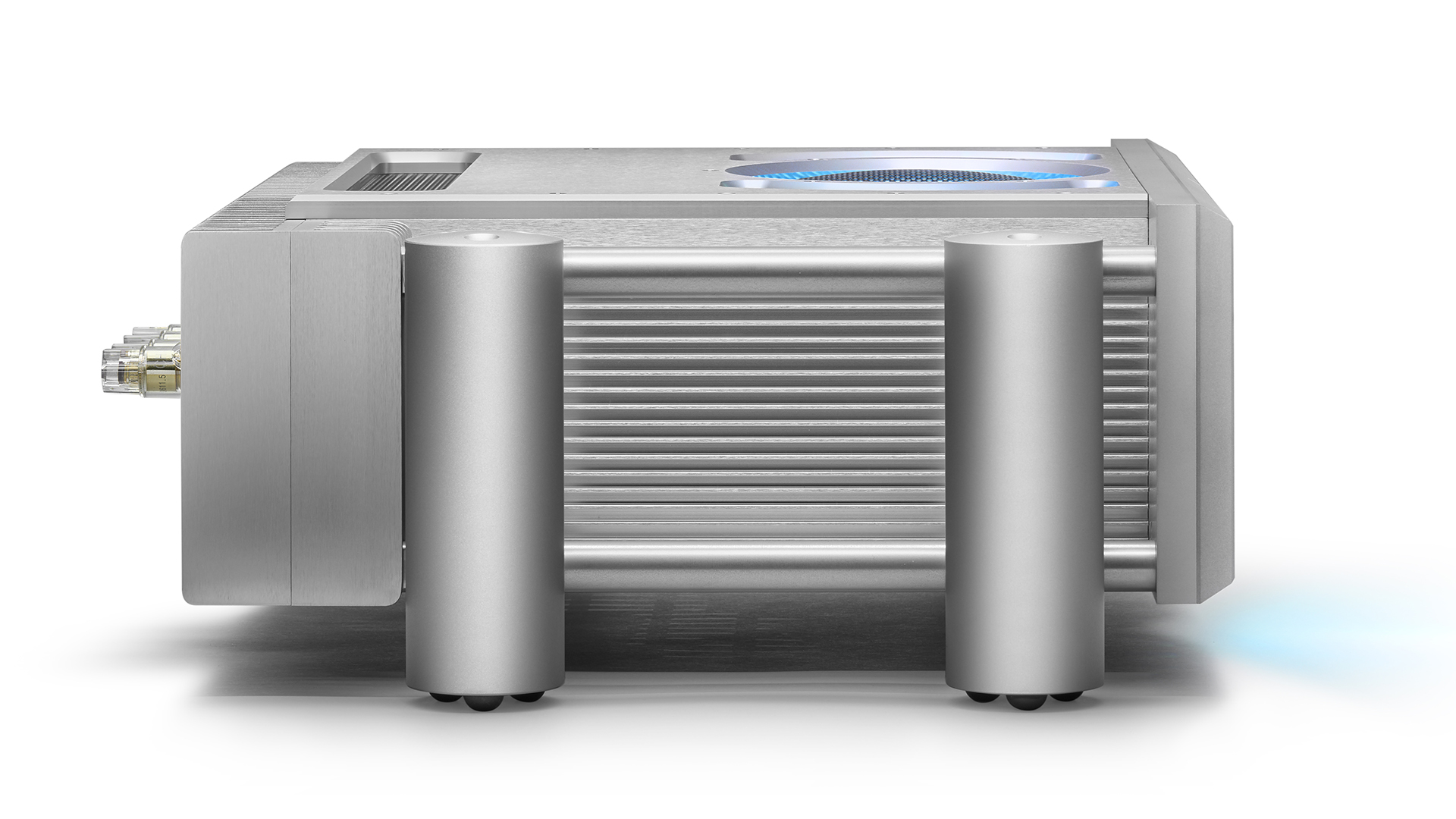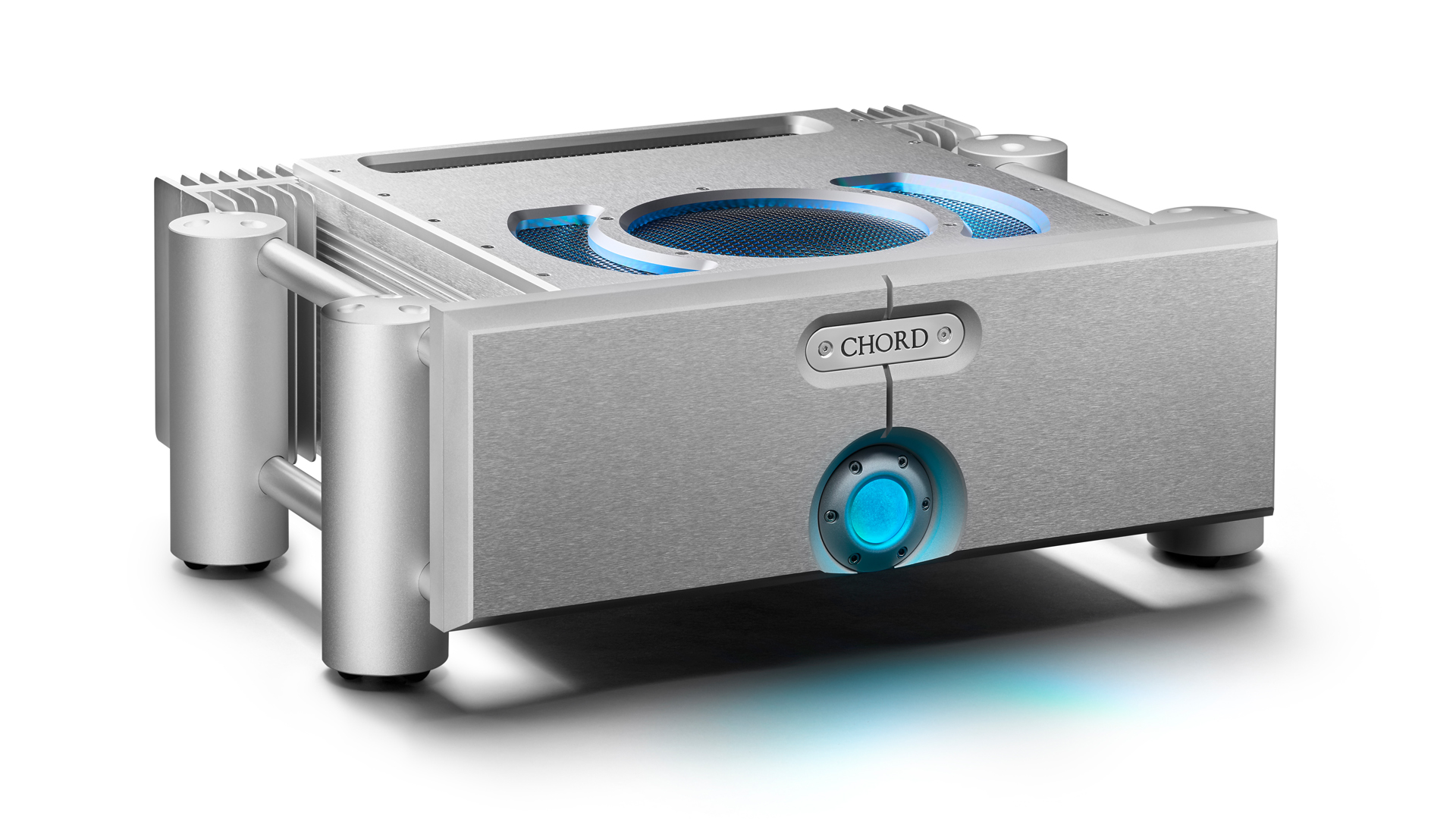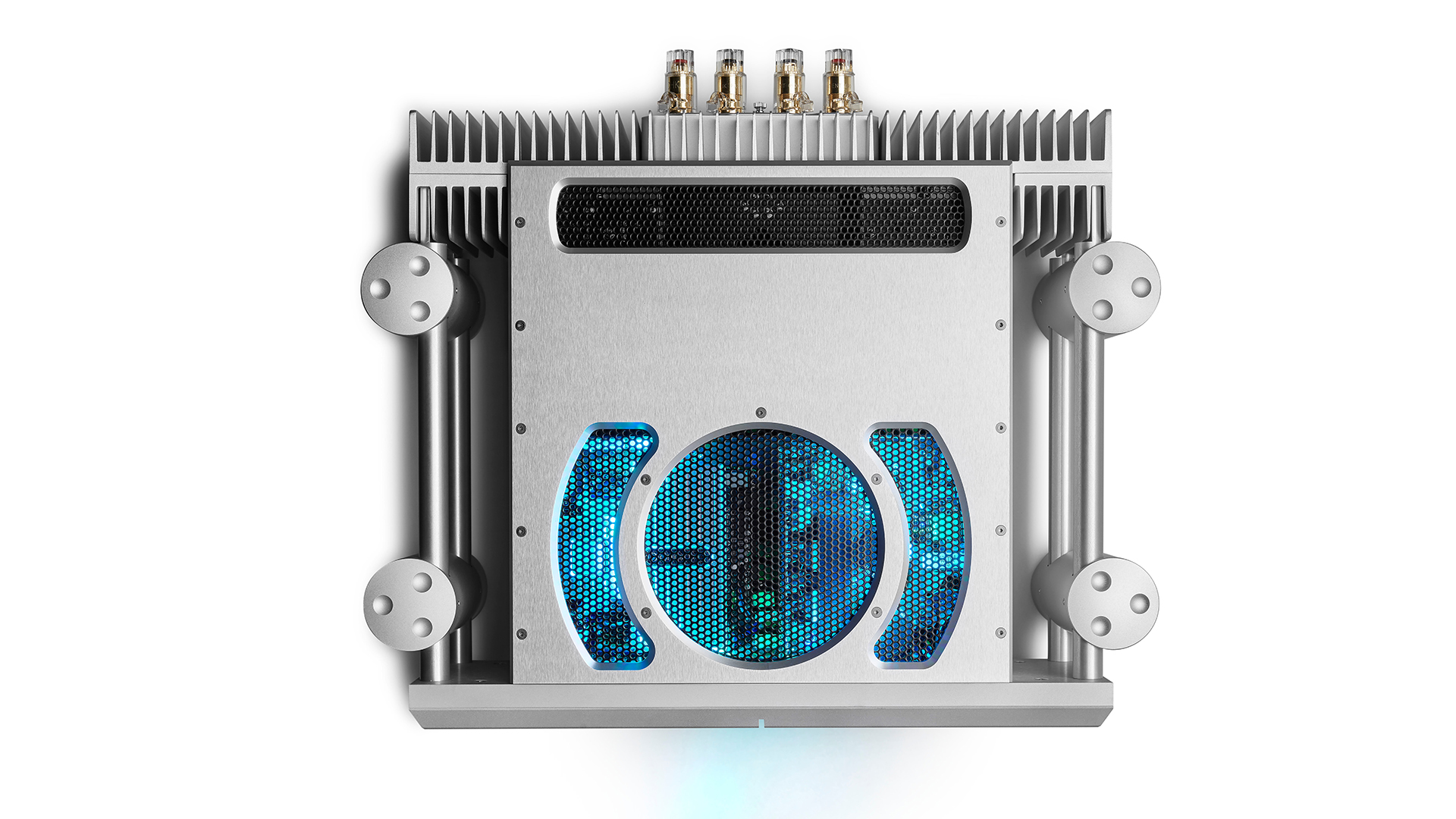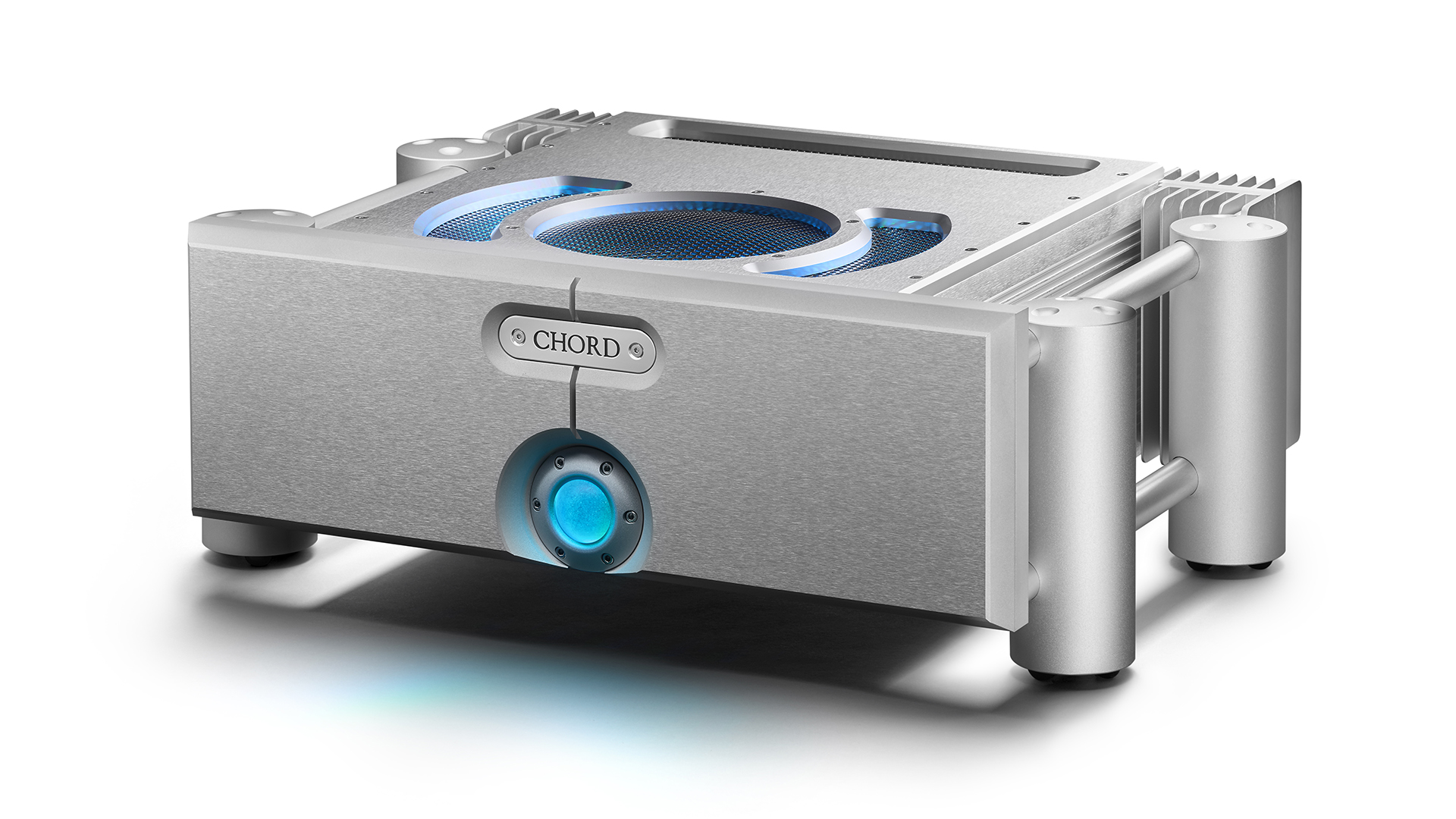What Hi-Fi? Verdict
If you’re after the last word in clarity and insight in a high-end power amplifier, we can’t think of a better choice than the Ultima 5
Pros
- +
Class-leading clarity
- +
Agile and articulate presentation
- +
Relatively compact design
Cons
- -
Not as muscular sounding as some rivals
Why you can trust What Hi-Fi?
Mention Chord Electronics and there’s a strong probability that one of its class-leading digital-to-analogue convertors will come into mind. And rightly so; the company has produced a long string of truly outstanding digital products over the last couple of decades and has a bursting trophy cabinet to prove it.
So successful has Chord been with DACs that it’s easy to overlook the fact that it started off as an amplification brand and has always made some excellent products in this field. Now, you can count the new Chord Ultima 5 stereo power amplifier among them.
Normally, we like to review complete pre/power combinations, but in this case we’re making an exception. Surprisingly, Chord doesn’t make a price-comparable preamplifier to go with the Ultima 5. Instead, most buyers use the terrific Chord DAVE DAC as a digital control hub, which offers volume and input-changing abilities.
That makes perfect sense if you have an all-digital set-up, and saves the considerable cost of a dedicated analogue preamp. Doing things this way also reduces the box count and simplifies the signal path. Of course, such an arrangement only works if the DAVE performs its preamp duties well. We have already reviewed the DAVE and it certainly does that, so here we’re concentrating on the new Ultima 5 power amplifier.
Build

Few companies can match Chord when it comes to making a bold visual statement – the scoops, the glitzy LED lighting under the top panel, and the extrovert styling make the Ultima 5 stand out in a generally conservative part of the market.

Type Stereo power amplifier
Inputs Balanced XLR, single-ended RCA
Output power 300W RMS per channel (8ohms)
Dimensions (hwd) 18 x 48 x 36cm (with legs)
Weight 22.4kg
That bold appearance is supported by truly excellent build quality, just as this elevated price point demands. The Ultima 5’s front panel is an immaculately crafted 28mm thick slab of aircraft-grade aluminium and every part of this amplifier, from those trademark cylindrical legs to the rear panel that doubles as a heatsink, oozes quality.
Take a look inside and you’ll find that the Ultima 5 differs from most rivals. This is mostly down to the use of Chord’s unusual high-frequency power supply arrangement. This does away with conventional bulky mains transformers and large power supply reservoir capacitors and replaces them with something the company considers more efficient, responsive and load tolerant. It’s a compact solution that is central to the brand’s DNA and has been used in its amplifiers from the beginning.
But the big news in the new Ultima 5 is the use of a dual-feed-forward circuit topology, which is claimed to produce a faster, more dynamic sound with improved transparency over the already capable previous generation Chord designs. The Ultima 5 uses no less than 64 proprietary MOSFET output devices and the result is a claimed power of 300W per channel. We doubt whether anyone will need more, but if they do, there are always the 750W Ultima 2 and 480W Ultima 3 monos in the range.
Features

When it comes to connectivity, power amplifiers tend to be simple things, and that proves the way here. There are stereo inputs in both single-ended RCA and balanced XLR forms, plus a set of chunky multi-way speaker binding posts.
A power amplifier at this level demands a top-quality system. Our main sources are Naim’s ND555/555 PS DR music streamer and a Technics SL-1000R/Kiseki Purple Heart MC record player feeding Nagra’s excellent Classic Phono (which, unsurprisingly, is a phono stage).
We also use our usual reference preamplifier, the Burmester 088/911 Mk3, alongside a Chord DAVE digital controller, and we complete the set-up with our trusty ATC SCM50 speakers. We also have Wilson Benesch’s Precision P2.0 floorstanders and ProAc’s K1 standmounters on hand to see how the Chord responds to alternative speakers.
Sound

In use, the Ultima 5 is a strikingly capable power amplifier. It's impressively transparent, taking on the character of whatever’s in the signal chain in front of it. If you’re looking for clarity, agility and detail resolution, it can rightly be considered class leading.
Most high-powered amplifiers tend to sound muscular all the time, irrespective of the music being played. So we’re pleasantly surprised that the Ultima 5 doesn’t do that. Given intimate music, such as Found Songs by Ólafur Arnalds, this Chord sounds suitably delicate and fleet-footed. There’s simply no hint of the huge power reserves on standby.
It delivers a tightly focused sound that brims with subtlety and texture. Some of Chord’s past efforts could sound a little clinical and cold, but this power amplifier avoids that charge, delivering the natural warmth and body of instruments convincingly.
Even so, the Ultima 5 could never be accused of sounding lush or rich. It’s a taut and highly analytical listen, able to take apart recordings without much effort. It’s not in this amplifier’s character to carry you away on a wave of exuberance (with suitable music, of course), but if you want to hear deep into the mix or track a low-level instrumental strand, this Chord is outstanding.
Switch to more bombastic music and the Ultima responds effortlessly. That huge claimed power output figure is easily believable when it pounds out Tchaikovsky’s 1812 Overture. It is rare to hear a power amplifier sound so composed and controlled when confronted by such demanding music played back at high volume levels. There’s never a hint of sonic stress. At most, that casework gets warm – though not unreasonably so – rather than anything obvious happening in the sound.
Listening to this symphony, we’re aware of how even-handed and neutral the Chord sounds. We’re also struck by how it sets up a huge, open stereo image and populates it with impressively layered and crisply focused sounds. Most importantly, it is capable of organising the mass of information it resolves into a cohesive and musical whole.
Verdict
We listen to a broad range of music in our time with the Ultima 5 and it never fails to impress. Sure, there are rivals that will sound livelier when playing Kanye West’s Yeezus set by displaying more in the way of low-end punch and rhythmic drive. Others will even sound smoother and easier on the ears with less than perfect recordings. But, none we’ve heard can match the Chord’s cut-glass clarity or resolve low-level information with as much skill.
The Chord Ultima 5 is not an overtly characterful amplifier; it doesn’t try to sound ‘musical’. All it does is attempt to pass on the signal as cleanly as possible. And in that aim, it’s hugely successful.
SCORES
- Sound 5
- Features 5
- Build 5
MORE:
Read our guide to the best stereo amplifiers
Read our Chord DAVE review
Read our Burmester 088/911 Mk 3 review
Read our Nagra Classic AMP review
What Hi-Fi?, founded in 1976, is the world's leading independent guide to buying and owning hi-fi and home entertainment products. Our comprehensive tests help you buy the very best for your money, with our advice sections giving you step-by-step information on how to get even more from your music and movies. Everything is tested by our dedicated team of in-house reviewers in our custom-built test rooms in London, Reading and Bath. Our coveted five-star rating and Awards are recognised all over the world as the ultimate seal of approval, so you can buy with absolute confidence.
-
Friesiansam Given the text of the review, I don't understand; "Against: Not as muscular sounding as some rivals"Reply
It seems from the review that it is muscular when it needs to be and, not when it doesn't need to be. Surely that is a positive, not a negative? -
nopiano Reply
You’re right in your analysis of the way the review is written, imho. It also might be a slightly tactful way to convey that it sounds like most Chord products, namely never the least warm or rich. They’re very accurate, but nobody who comments on them ever says they lack detail or brilliance. And judging by the number of used DACs on eBay they are probably ‘too much’ for many ears.Friesiansam said:Given the text of the review, I don't understand; "Against: Not as muscular sounding as some rivals"
It seems from the review that it is muscular when it needs to be and, not when it doesn't need to be. Surely that is a positive, not a negative?
A similar comment is often levied at my ATC speakers, which some think convey too much information. Obviously they’re just right for me! -
Sliced Bread The first time I heard the scm40’s I thought the bass was just right but less than I was expecting. Most people have become accustomed to some form of bass hump around the 80hz region.Reply -
nopiano Reply
Exactly, they are familiar with ported speakers’ bass hump. A nicely tailored roll off, enhanced by room placement plays much better pitch, clarity and evenness ime.Sliced Bread said:The first time I heard the scm40’s I thought the bass was just right but less than I was expecting. Most people have become accustomed to some form of bass hump around the 80hz region. -
Deliriumbassist Replynopiano said:Exactly, they are familiar with ported speakers’ bass hump. A nicely tailored roll off, enhanced by room placement plays much better pitch, clarity and evenness ime.
And this is also where a lot of people get subwoofer crossovers incorrect, thinking LPF and HPF should be set at the same frequency. Nope - because then you get that hump! -
Sliced Bread Reply
Guilty ✋Deliriumbassist said:And this is also where a lot of people get subwoofer crossovers incorrect, thinking LPF and HPF should be set at the same frequency. Nope - because then you get that hump!
Took me an age and three subwoofer cycles to figure this out. -
Sliced Bread Reply
Yes for sure. I would love to go down the infinite baffle route for this reason, but you need some decent amplification.nopiano said:Exactly, they are familiar with ported speakers’ bass hump. A nicely tailored roll off, enhanced by room placement plays much better pitch, clarity and evenness ime. -
Deliriumbassist ReplySliced Bread said:Guilty ✋
Took me an age and three subwoofer cycles to figure this out.
I think a lot of the confusion comes from the naming, misunderstanding of filters, and the fact that you have a single frequency selection in the crossover settings in A/V receivers.
1) Technically the control on the subwoofer is not a crossover, it's just a low pass filter
2) These filters aren't brick-wall
3) In A/V receiver settings, these crossover points are preset, with the LPF and HPFs internally decided and applied to achieve that -
Sliced Bread Yes very true. Set it too high and you’re just doubling up.Reply
A helpful article from Rel noted that a subwoofers first job is to get out of the way of the main speakers. I’d now rather have a slight dip in the cutover than attempt an overlap. It sound s so much cleaner and more natural

